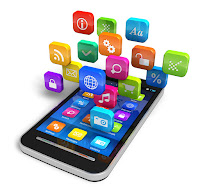Consumers are at the heart of the digital transformation, in every industry starting Retail, Financial services, insurance & Health Care.
Consumers are most concerned with getting quick, easy and effective results from any interaction in their professional or personal life.
Consumer Packaged Goods companies are typically relied heavily on traditional media like TV and display advertising to drive brand awareness among consumers. You will see multiple advertisements for toothpaste, detergents, and dairy products and so on.
They have so far relied on mass marketing; focused on physical brick & mortar sales. They still have to catch up on online ordering like electronics, books etc.
The physical store still enjoys a major share of the market: customers like to feel a product before they buy it.
CPG companies are quickly adopting digital to connect with millennial consumers.
They are using Big Data Analytics:
· To identify consumers who will convert with less spend on marketing.
· Trying to identify the best and most profitable channels to sell select products and pack sizes.
· To gain deeper insights into price-sensitive consumers
· To be able to send unique offers to every consumer with extreme personalization
· 360 degrees customer views to build loyalty
Here are some innovative ways CPG industry is using digital for excellent customer experience:
· Social media to understand the needs, gaps, brand performance, and purchase behavior leading to significant input for targeting, positioning as well as new product development.
· Using geo-fencing to provide real-time deals when a consumer approaches the store.
· Stores like Amazon Go has come up with cashless checkouts. When the customers have the Amazon app installed on their mobile device, any product added to the cart gets billed to the customer’s account automatically.
· Mobile payments: most of the physical or online stores are accepting mobile payments like Apple Pay, Samsung pay, PayTm etc.
· Beacons: to ease finding products in a store, a customer can download the retail store app, and be able to connect to the store’s “beacons” and get details of the best deals available
· Smart Shelves: these indicate inventory levels, and instantly update product prices on display.
The future is digital and CPG companies are adopting it with an open heart.





